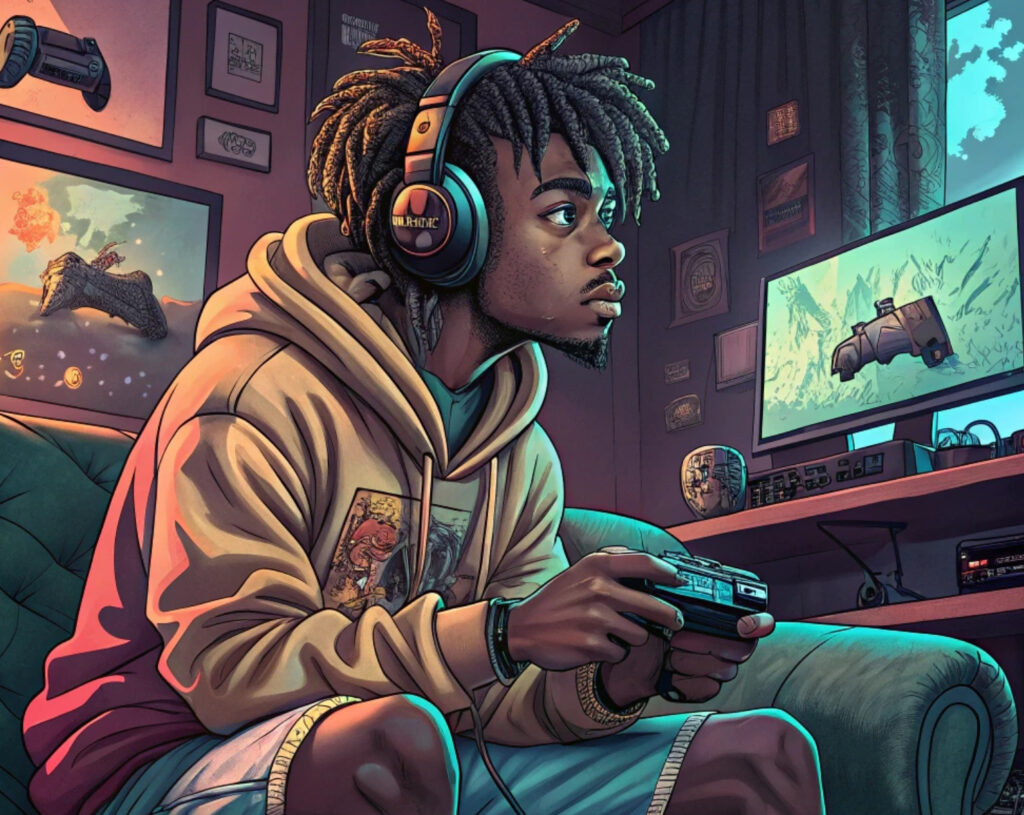
For decades, video games carried the stigma of escapism—an isolating pastime confined to basements and teenage bedrooms, often coupled with parental anxiety and outdated tropes. But the narrative is shifting. A new generation of research, design thinking, and digital therapy is proving that the medium once blamed for sedentariness and social withdrawal can, in fact, promote mental wellness.
The Rise of Cozy Games: Soft Pixels, Strong Hearts
“Cozy” games, a rapidly growing subgenre of interactive media, blossomed into the mainstream during the isolating early months of the pandemic. Nintendo’s Animal Crossing: New Horizons—a social simulator where players decorate islands, befriend villagers, and watch virtual seasons pass—became a global balm in a world on pause. But beyond its popularity lay a deeper psychological mechanism: the ability to induce “flow.”
Flow, a concept developed by psychologist Mihaly Csikszentmihalyi, refers to a state of immersion in an activity that balances challenge and skill in a way that makes time disappear and stress recede. In Stardew Valley, another cozy favorite, players manage a farm with no deadlines. In Spiritfarer, they gently ferry spirits to the afterlife. These are not adrenaline-fueled pursuits but slow, intentional acts of care, connection, and creativity.
Research has begun catching up to what fans already sensed: games that lack competitive pressure, feature soothing visuals and ambient soundtracks, and allow open-ended goals can reduce cortisol, regulate mood, and offer a portable sense of control. In an era defined by burnout and overstimulation, cozy games are reimagining interaction as a form of active rest.
Scientific Backing: One Hour to Heal
A 2023 study from Japan confirmed what many players suspected: even short doses of gaming—one hour per day—can significantly improve life satisfaction and general mental well-being. Importantly, the effect is not tied to any single game type but is most pronounced in titles that promote calm, creativity, and social interaction.
These findings follow earlier studies by the Oxford Internet Institute, which found positive correlations between time spent on games like Animal Crossing and self-reported happiness. Unlike passive media consumption, games engage multiple cognitive systems simultaneously, offering both escapism and cognitive stimulation—a rare combination in a world of doomscrolling.
What distinguishes this new research wave is its precision. No longer satisfied with binary verdicts—“games good” vs. “games bad”—scientists are asking which mechanics benefit which populations, and why. The emerging consensus suggests that moderation and context matter. Cozy games may offer neurochemical rewards akin to meditation or mindfulness when consumed thoughtfully, rather than obsessively.
Gamified Therapy: When Play Meets Prescription
The crossover from wellness to clinical treatment is perhaps the most intriguing development. Gamified mental health interventions are no longer speculative. They’re here—and in some cases, FDA-approved.
Take RETHINK, a VR-based “mental health action shooter” developed by a Seattle startup. Despite its genre name, it’s less Call of Duty and more magical realism: players shoot “wizard beams” at floating metaphors of stress, blood pressure triggers, or negative thoughts. With FDA clearance for stress reduction and high blood pressure management, the game marks a symbolic turning point. Play is no longer just permitted—it’s prescribed.
Gamification here works not through distraction but through repetition, reward systems, and the psychological principle of mastery. Users learn to identify emotional triggers, develop breathing techniques, and receive real-time feedback—all within the feedback loop of game mechanics. For patients wary of traditional therapy or without access to professional care, such games offer an approachable alternative.
According to a recent review by Johns Hopkins University, gamified platforms have shown mild but consistent efficacy in reducing symptoms of depression, boosting attention in users with ADHD, and even helping children on therapy waitlists regulate mood. These are not silver bullets—but they are lifelines.
The Streaming Shrink: Enter Dr. Alok Kanojia
Perhaps no figure better embodies the overlap between gaming and mental health discourse than Dr. Alok Kanojia, known online as “Dr. K.” A Harvard-trained psychiatrist and former gamer himself, Dr. Kanojia launched Healthy Gamer, a digital coaching service rooted in both clinical insights and gaming culture fluency.
Initially streaming mental health conversations on Twitch—a platform better known for Fortnite and League of Legends than cognitive therapy—Dr. Kanojia built a massive following by meeting gamers where they are. His sessions tackled anxiety, addiction, procrastination, and burnout through a mix of Eastern philosophy, Western psychology, and meme-savvy relatability.
However, his popularity came at a professional cost. In 2024, his state’s medical licensing board reprimanded him for blurring the lines between content and care—raising questions about ethics in telepresence and influencer-driven health spaces. Still, the demand for what he offered—therapy that speaks the gamer dialect—is a revealing cultural cue. Even psychiatry must adapt to digital fluency.
Youth in Crisis: A Therapeutic Imperative
The backdrop to all this is stark. The United States faces a mounting youth mental health crisis, with nearly 20% of adolescents exhibiting symptoms of emotional, behavioral, or developmental disorders. The causes are manifold—social media pressure, academic stress, climate anxiety, isolation—but the bottleneck is singular: access to care.
With a national shortage of therapists and long waitlists for services, many families are left to manage without professional help. In this vacuum, games—especially those designed with therapeutic input—are becoming provisional bridges. According to the Johns Hopkins study’s lead author, gamified tools “could be nice first steps for children while waiting to start individual therapy.”
These are not cure-alls. But in their accessibility, familiarity, and interactivity, they provide an essential entry point. Where traditional therapy might feel intimidating or stigmatizing, a game feels natural—especially to digital natives.
Ethical Design: What Makes a Game Therapeutic?
Not all games are created equal. The difference between therapeutic play and compulsive distraction lies in intentional design. Games that support mental health tend to exhibit the following traits:
- Clear and kind feedback loops (players always know how they’re doing)
- Non-punitive failure mechanics (you can try again without shame)
- Aesthetically gentle environments (pastoral visuals, soft soundtracks)
- Narratives centered on emotional growth, empathy, or resilience
- Open-ended play styles (less grinding, more discovery)
Titles like Unpacking, Kind Words, and Alba: A Wildlife Adventure exemplify this ethos. They don’t overwhelm the player. They invite them to slow down.
Importantly, therapeutic design also respects player autonomy. Unlike gamified marketing, which nudges users toward consumer behavior, gamified wellness encourages inward exploration. This is care by way of calibration, not coercion.
Business Implications: The Gamification Economy
As the stigma lifts and the research affirms results, businesses are taking notice. Wellness platforms are integrating game mechanics; tech firms are exploring hybrid formats; even traditional therapy apps like Headspace and Calm now include game-like modules for habit tracking and stress relief.
Moreover, a new generation of studios is emerging with dual goals: emotional engagement and mental health support. These developers often consult with psychologists and neuroscientists from the outset, ensuring their games rest on more than instinct.
The market for mental health gaming—valued at over $3 billion globally—is projected to grow significantly by 2030. As demand for scalable mental health interventions rises, digital interactivity will be a key arena for innovation.
Suggestion
The joystick has become a journal. The headset, a stethoscope. In an age of overlapping crises—pandemics, climate dread, digital alienation—the search for wellness must include novel paths. Games, once dismissed as distractions, are proving capable of more: nurturing resilience, scaffolding emotional intelligence, and offering joy in structured doses.
But as with any tool, impact depends on intention. The future of therapeutic gaming lies not in maximal engagement but in meaningful design. The goal isn’t to play more—it’s to play well.
However, cozy games lull our minds into focus and wizard-beam shooters teach us to breathe again, one thing is clear: healing doesn’t always look like a waiting room. Sometimes, it looks like a pixelated village, a soft soundtrack, and an invitation to care—for characters, and for ourselves.
No comments yet.








